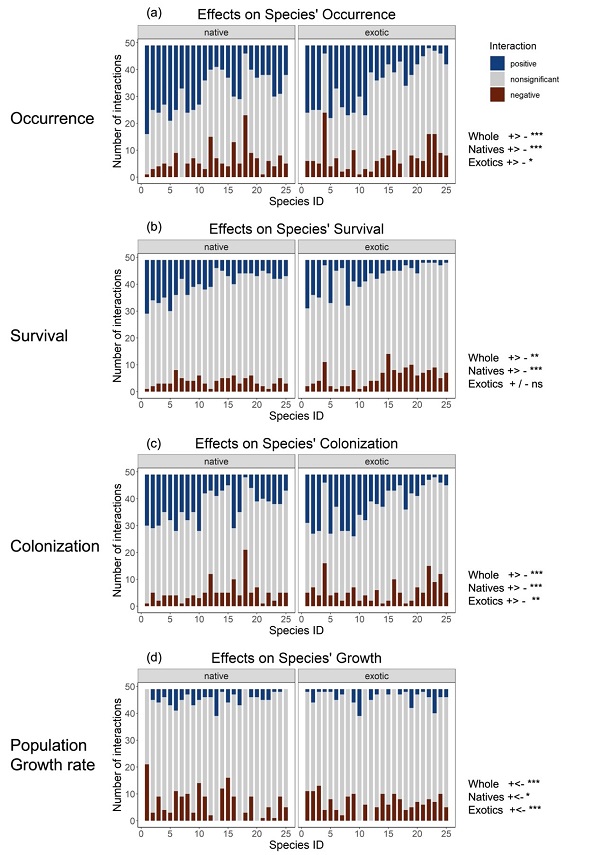Functional traits and tree demographic properties: a case study in subtropical monsoon forests
Functional traits are plant attributes that can reflect plant life-history processes such as carbon acquisition, water transport and nutrient cycling, and include features associated with plant physiology, morphology and phenology. Plant demographic properties such as growth, mortality and recruitment are fundamental processes influencing species fitness, species diversity and carbon sequestration. Understanding how functional traits influence tree demography is a core aim of forest ecology, which is necessary to accurately assess forest dynamics and functioning, especially in the context of climate change. However, forecasting forest community dynamics is challenging because the relationships among different tree demographic properties and how functional traits are associated with tree demography remain largely unknown.
We carried out a long-term field investigation in a 20-ha permanent plot in a subtropical monsoon forest of Southern China. Three plant demographic rates, i.e., growth rate, mortality rate and recruitment rate were calculated via community inventories in the years 2005 and 2020. Plant functional traits associated with photosynthesis, hydraulics, drought tolerance, nutrients and leaf life span were quantified for 53 dominant tree species. We found that hydraulic conductivity was positively correlated with tree growth rate, whereas wood density was negatively correlated with growth rate. Leaf life span was negatively related to tree mortality. Species with high carbon assimilation rate, nutrient concentration and hydraulic conductivity had high recruitment rates. Leaf turgor loss point (i.e. the ability to avoid wilting during drought) was unrelated to plant demography. Species with quick resource-acquisition rates had high rates of growth and recruitment.
Our results demonstrated no correlation between plant growth and mortality, and only weak to medium-strength correlations between functional traits and plant demographic properties that might be affected by disturbances (e.g., typhoons) experienced by this subtropical monsoon forest. Therefore, future studies are needed to further evaluate the influence of disturbances (e.g., wind, fire, drought and pests) on the relationships between plant functional traits and plant demographic properties.
